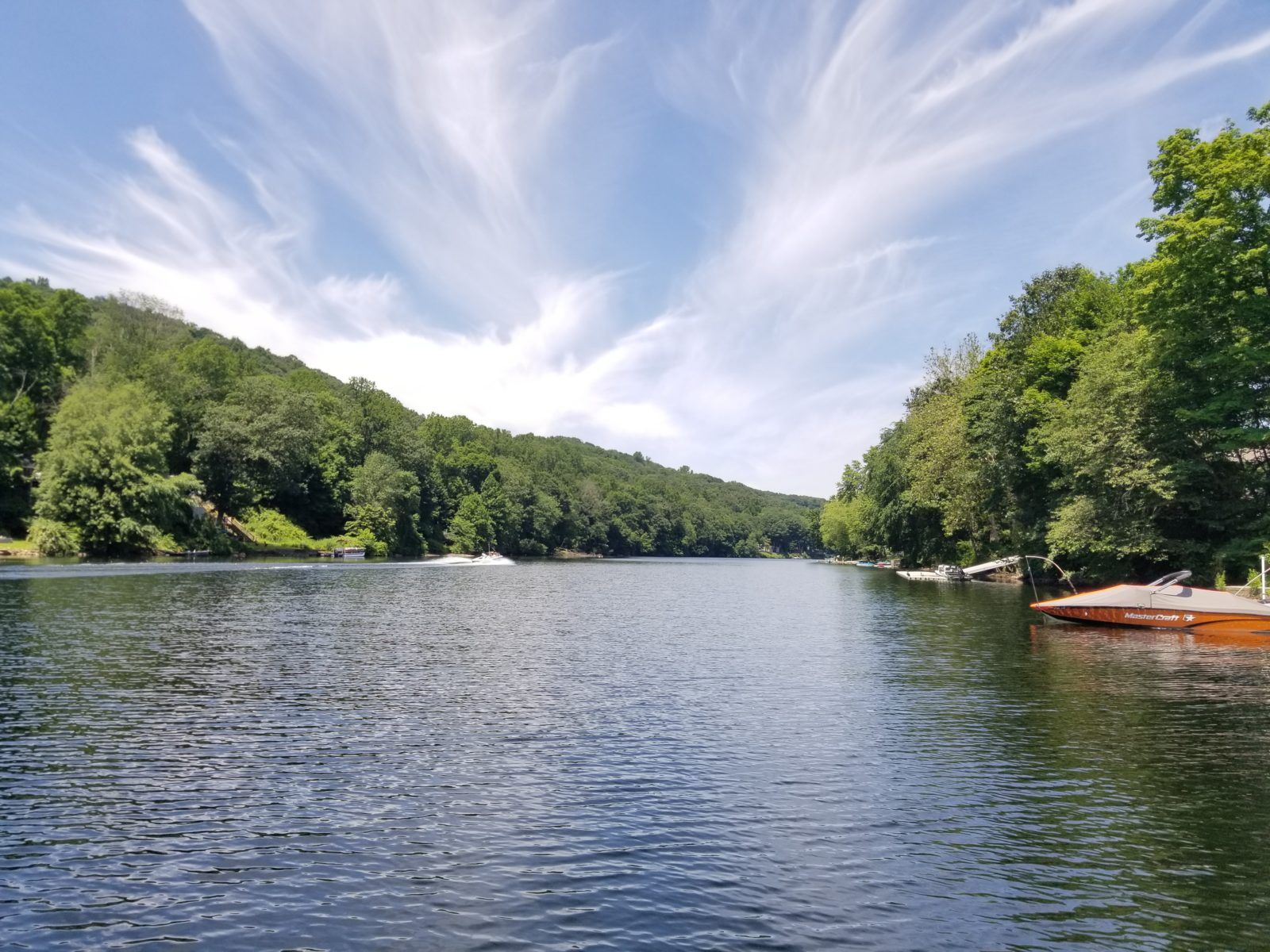How Algae and Aquatic Vegetation Play A Role In Fisheries Management
April 26th, 2013

Pond affected by algae blooms
Algae are non-vascular plants with simple reproductive systems that do not have true roots, stems, leaves or vascular tissue, although some macroscopic algae may resemble plants in appearance. Algae occur in both freshwater and marine habitats, and are an important aquatic food source for many animals. Excessive algae blooms however can be damaging to aquatic ecosystems and some species produce harmful toxins.
Vascular aquatic plants may be submersed, floating, or emergent, and native species are essential to a healthy aquatic habitat. Vascular aquatic plants are classified as “weeds” when they are growing in areas where they are not wanted, and many species are prolific enough to occupy the entire water column or surface of a water body. Aquatic vegetation is an extremely important component of most freshwater systems, providing habitat, refuge, and food for a wide variety of organisms including fish, invertebrates and waterfowl. However, overabundant native algae and aquatic vegetation, as well as exotic species, can throw the fishery out of balance by disrupting the interaction between the fish community while also negatively impacting water quality.
Aquatic vegetation and algae can become problematic and threaten the productivity of your fishery. Four common methods used to proactively manage your ponds vegetation and algae are:
1) Stocking herbaceous and omnivorous fish such as Triploid Grass carp and tilapia
2) Decreasing the sunlight’s ability to penetrate deep into the water using plankton or lake dye (If your pond is relying on supplemental feeding, then dye may meet your goals, but in most cases dye should be avoided and plankton should be encouraged using fertilizer.)
3) Managing nutrients using aeration
4) Tolerating certain species of beneficial vegetation and allowing it to grow in shallow areas. When combining these four approaches, vegetation management becomes much easier. Staying ahead of the plants and not letting them become a problem is important. If you have undesired species, make sure to control them before they take over the pond. Herbicides and algaecides will often be needed, but with proper management they will be utilized less frequently and in smaller quantities. When putting your pond or lake on a fertilizing program, it is imperative that undesired algae and plants species are eradicated prior to fertilizing.
Pickerel Weed
Managing for vegetation coverage is an ideal goal for most fisheries. This vegetation is often best when it is an emergent species that is unable to grow in waters greater than two feet deep. Beneficial emergent plant species mesh very well with the long-term Fisheries Management plan, since they do not require expensive herbicides to control. It is important to avoid vegetation species that are capable of taking over the water body, since it can become difficult and expensive to contain on an annual basis. Emergent vegetation such as Water Willow, Pickerel Weed, Duck Potato, Spatterdock, Irises, Rushes and Sedges are all examples of the desired beneficial species. There are both chemical methods using aquatic herbicides, and biological techniques such as grass carp and bacteria used to control unwanted plant and algal growth.
Contact the experts at 888-480-5253 for all of your lake, pond and fisheries management needs.
Since 1998, SOLitude Lake Management has been committed to providing full service lake and pond management services that improve water quality, preserve natural resources, and reduce our environmental footprint. Services are available throughout the Eastern United States. Fisheries management consulting and aquatic products are available nationwide. Learn more about SOLitude Lake Management and purchase products at www.solitudelakemanagement.com.











